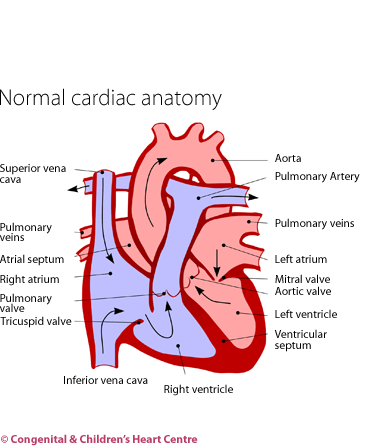Innocent Heart Murmur

What is it?
A noise heard in the heart during examination with a stethoscope. Such a murmur may indicate that there is something wrong with the heart. However, it is more likely to be associated with a normal heart and this type is called an innocent murmur, also known as a functional, benign, flow or Still's murmur.
There are several types of innocent murmur. The vibratory or Still's murmur is a musical type of noise heard by the stethoscope low down on the chest. The pulmonary flow murmur is heard loudest at the top of the chest and may represent flow disturbance in the artery to the lungs. A venous hum is the sound of blood returning to the heart in the veins.
What causes it?
It is important to emphasise that these murmurs are not caused by any structural heart problem. The noise comes from the flow of blood through a normal heart and is due to some
form of minor flow disturbance, turbulence or resonance, of no consequence.
How many people get it?
Fifty per cent of all babies and children are estimated to get an innocent murmur at some stage.
Who gets it?
The murmur can occur in anyone. It tends to be prominent in children with a fever or a fast heart rate due to running or excitement.
What are the signs and symptoms?
Innocent murmurs do not cause any symptoms whatsoever. That is not to say that children with innocent murmurs do not have symptoms attributable to other causes.
What kind of tests might I have?
An experienced doctor can usually distinguish an innocent from an abnormal murmur just by listening with a stethoscope. The innocent murmur will have a particular set of recognisable qualities. Sometimes, such infants and children are referred to a paediatric cardiologist for further investigation where the cause is unclear. After questioning the parents to obtain the child's history and examining the child, several tests may be organised.
The innocence of the murmur can be confirmed by performing an ultrasound scan of the heart (echocardiogram). In addition an electrocardiogram (ECG) to measure the electrical activity of the heart and a chest X-ray to visualise the heart and lungs may be required.
What is the treatment?
As there is nothing wrong with the heart, no treatment is necessary. Reassurance is given to the child and family that the heart is normal and that the child should lead a completely normal life with absolutely no limitations.
Are there any complications of the condition?
There are no complications to this condition as there is nothing fundamentally wrong with the heart.
What is the prognosis?
Innocent murmurs often disappear at puberty but even if they do not, they are not of any consequence as they are found in normal hearts.
